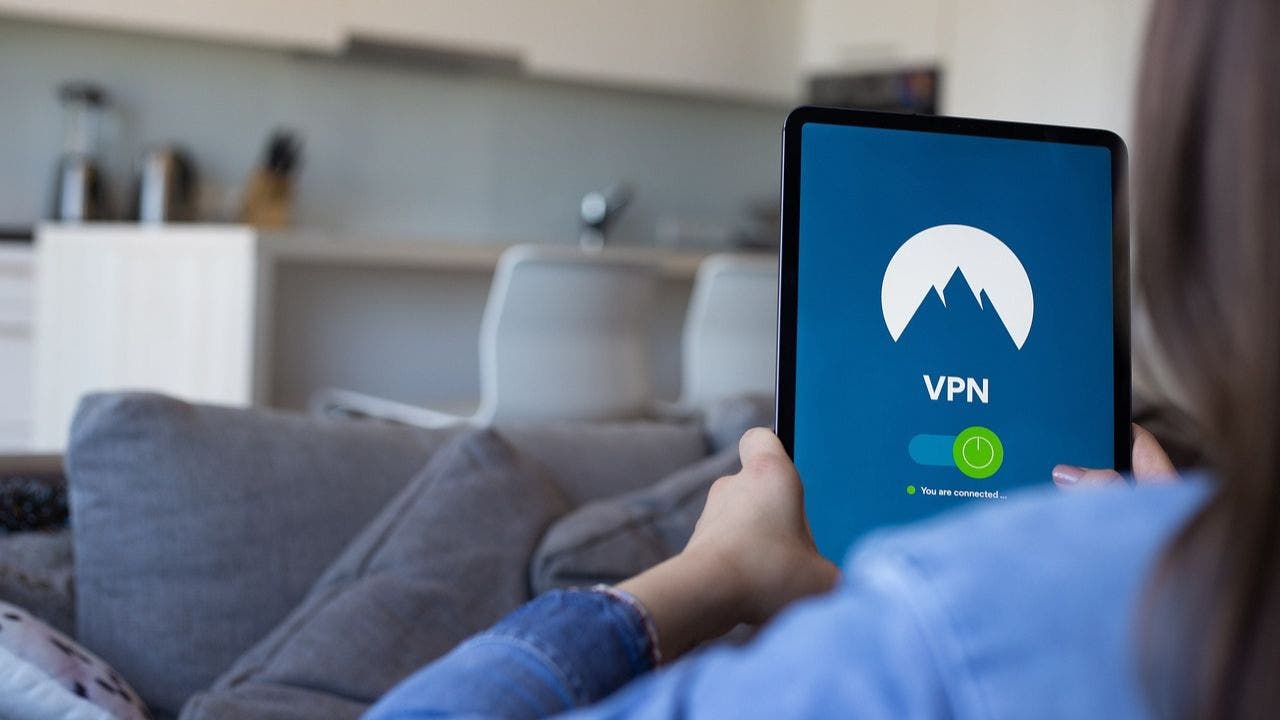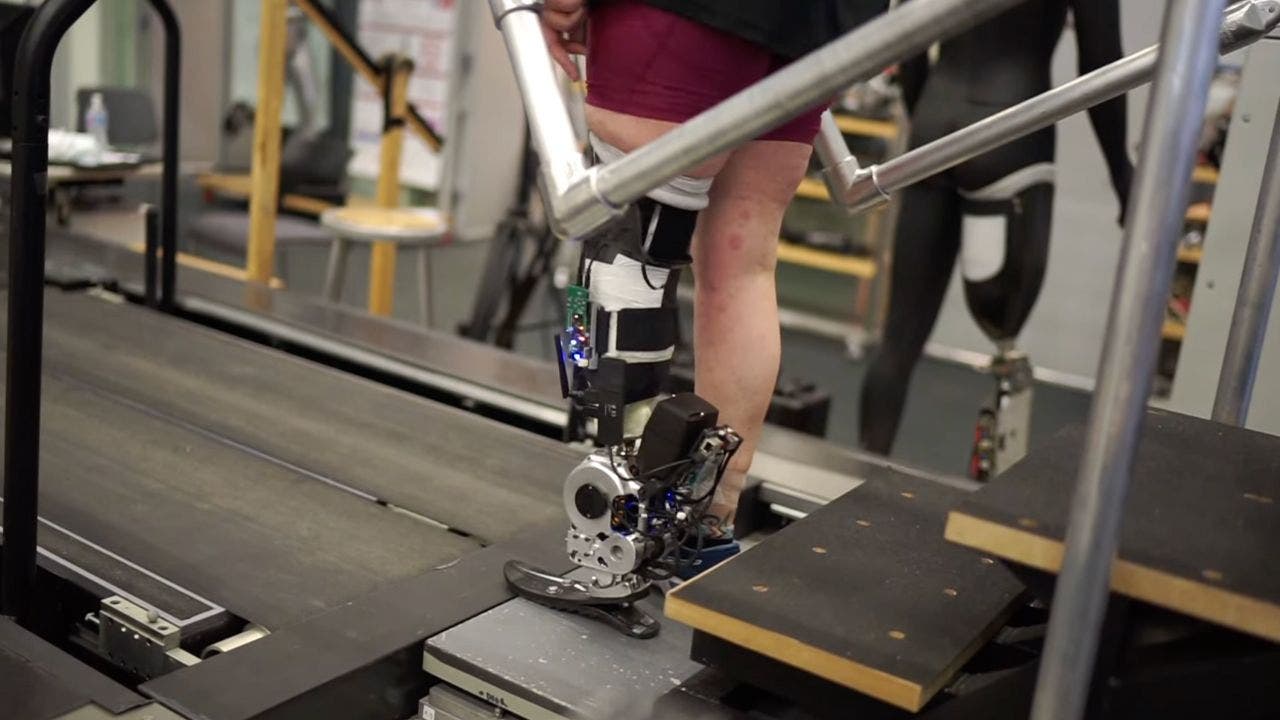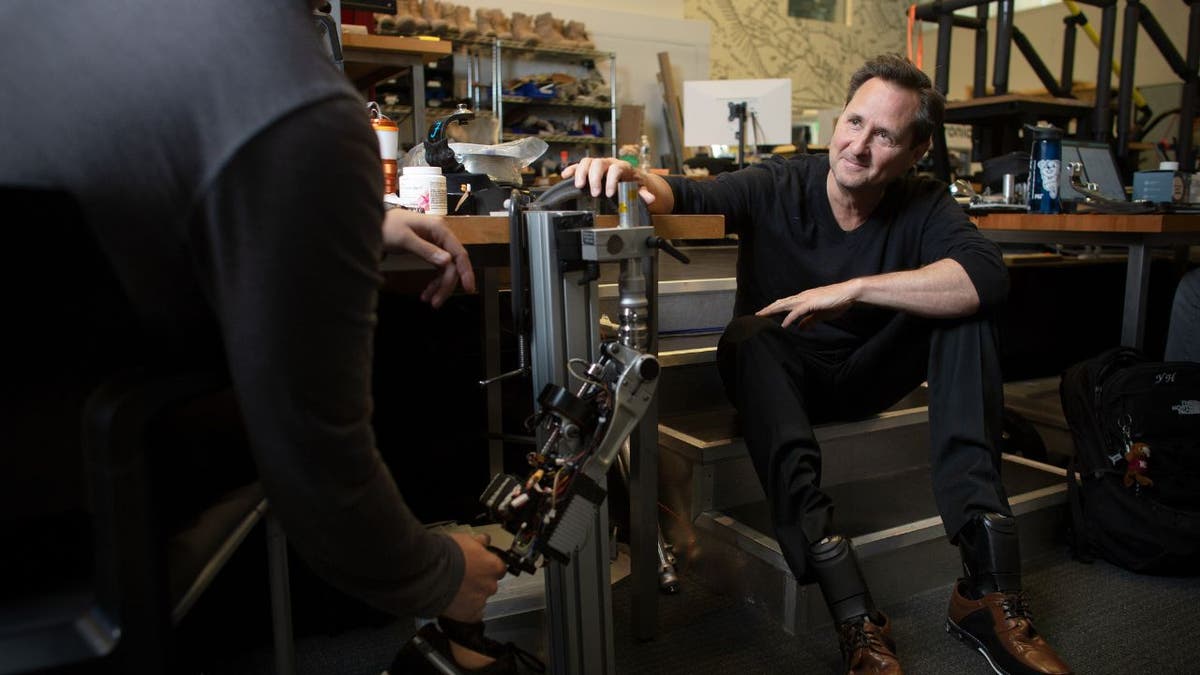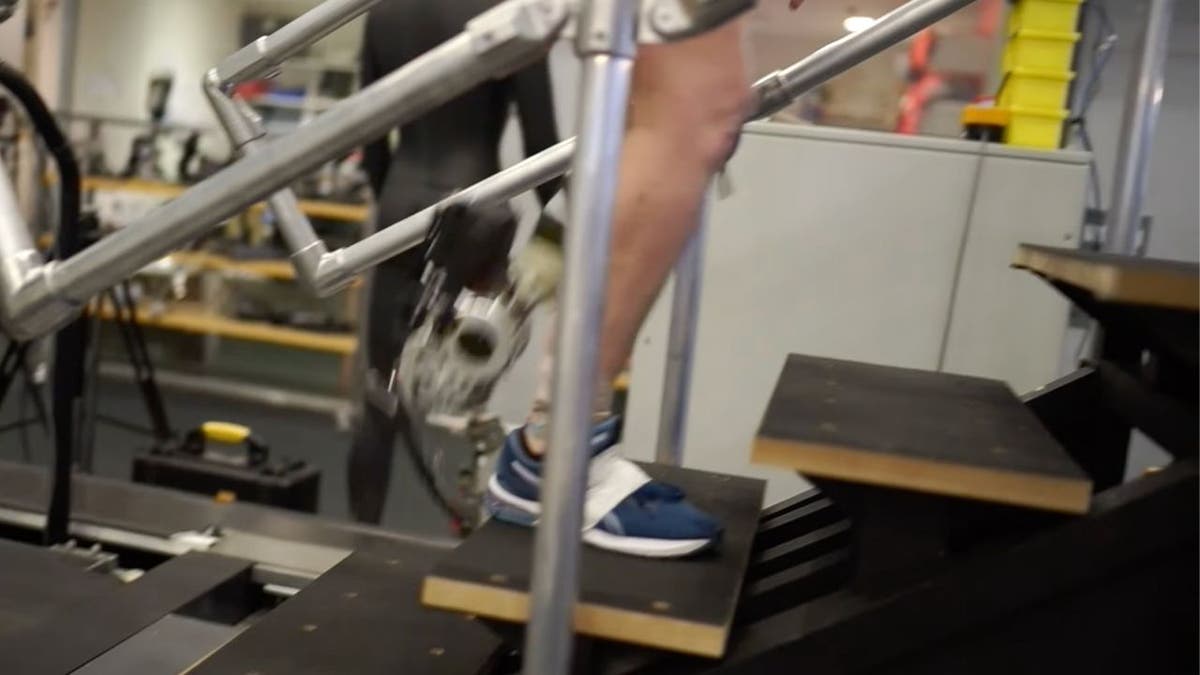Technology
How to protect your online privacy, security with VPN while using hotspot

Having a stable internet connection is vital in today’s always-online world. One way to stay connected while on the go is with a hotspot, which uses your cellphone’s cellular network to create its own Wi-Fi network that other devices can connect to.
However, hotspots aren’t the safest way to go online, and they suffer from the same risks that any public Wi-Fi connection does, such as data breaches or misuse by hackers and other nefarious actors.
Although there is an easy way to keep yourself protected when using a hotspot, though, and that’s by using a virtual private network or VPN. It adds an extra layer of security and can keep you safe online. If you do decide to create and use a personal hotspot, remember to always make sure it’s password-protected.
Now, we’ll take you through the benefits of using a VPN with a hotspot and show you step by step how to set up a VPN.
CLICK TO GET KURT’S FREE CYBERGUY NEWSLETTER WITH SECURITY ALERTS, QUICK VIDEO TIPS, TECH REVIEWS AND EASY HOW-TO’S TO MAKE YOU SMARTER
Woman on a tablet using VPN (Kurt “CyberGuy” Knutsson)
What is a hotspot?
A hotspot refers to a physical location where wireless internet access is available, typically using Wi-Fi technology. It could be a public location like a cafe, airport, hotel or library that offers internet access to its customers or visitors.
Additionally, you can create personal hotspots using your smartphone or other devices, allowing you to share your cellular data connection with nearby devices, such as laptops or tablets, via Wi-Fi. This enables these devices to connect to the internet even when they’re outside the range of a traditional Wi-Fi network.
Hotspots are useful for providing internet connectivity on the go and are commonly used in situations where accessing Wi-Fi networks or wired connections is not possible or convenient.
What is a VPN?
A virtual private network, or VPN, is a technology that creates a secure and encrypted connection between a device, typically a smartphone or laptop and another network over the internet. Here’s how they work.
Encryption
When you use a VPN, all your internet traffic will be encrypted. This means that all data sent and received will be scrambled and protected from any prying eyes.
Routing
All traffic sent through a VPN is routed through a server that is operated by the VPN provider. This server acts as a middleman between your device and all of the websites or online services you access.
Disguising your Identity
By connecting to a VPN server, all of your internet activity will appear to originate from the VPN provider’s server location. For example, if the VPN provider hosts their server in a different country, your traffic will appear in that country, even if you are connecting to the VPN from the United States. This can help you bypass certain geolocation restrictions on websites to access content that might otherwise be unavailable in a specific region.
Privacy on Public Wi-Fi
When connected to a public Wi-Fi network, which is always risky, a VPN will shield your browsing activity from potential hackers and snoopers. Here are some mistakes to avoid if you have to use public Wi-Fi.

Person on a laptop using a VPN (Kurt “CyberGuy” Knutsson)
MORE: BEST WI-FI RANGE EXTENDERS
Choosing a VPN provider
Using a VPN with a mobile hotspot is a great way to keep yourself protected, as we’ve shown above. Fortunately, these days, there is a wide range of VPN providers. See my expert review of the best VPNs for browsing the web privately on your Windows, Mac, Android & iOS devices.
Luckily for users, setting up a VPN isn’t difficult at all. Once you’ve picked your provider, here’s what you will want to do next.
Install the VPN application
Once you’ve selected a VPN, you’ll want to install the application on your device. Always make sure you are downloading directly from the developer or a trusted intermediary such as the Apple App Store or Google Play Store.
Create an account
After you’ve installed your VPN application and opened it for the first time, it’s time to create your account. The majority of VPN services will require you to create a username and password with an email address.
Select server location
Now that you have an account, you can begin using your new VPN. The first step in any VPN application is to select your server location. While there are advantages to picking a location further away, such as bypassing geo-location locks on specific content, it’s best to pick a server location that’s close to you. This will allow you to experience the optimal speed while browsing securely with a VPN.

Laptop with Google search displayed (Kurt “CyberGuy” Knutsson)
MORE: BEST POWERLINE ADAPTERS
Test the connection
After the initial application, you can launch your VPN application anytime you want to create a secure network. However, it’s important to note that if you want to use your phone to create a mobile hotspot, and you want to access the internet from that hotspot on your laptop, you will need to have the VPN installed and operating on both devices. This is because security protocols of both iOS and Android do not allow multiple devices to share the same VPN IP address.
This process is simpler than it may sound, simply install whichever VPN service you prefer on both devices, log into your account and select the same VPN server location for a faster and more stable connection on both devices. After that, you just need to make sure the connection is working. Once you have a VPN actively running on any mobile device, it will encrypt the data between the network and you, you just need to simply open a browser and make sure you have an internet connection.
If you are able to access the website, then congratulations! You now have a VPN protecting your mobile hotspot data.
MORE: HOW TO STOP SOMEONE FROM TRACK YOU ON YOUR PHONE
Kurt’s key takeaways
A VPN is a great way to keep yourself protected while browsing the internet on a hotspot. We’ve shown you how easy it is to set up a VPN with a mobile hotspot, and we recommend using a VPN anytime you are using a public network. There’s a wide range of VPN providers out there these days, so it’s a good idea to always do a bit of research beforehand. You’ll want to pay close attention to pricing, services offered and trusted reviews of any VPN service you plan on downloading.
Have you ever experienced any security issues or concerns while using public Wi-Fi networks, and if so, how do you think using a VPN could mitigate those risks? Let us know by writing us at Cyberguy.com/Contact.
For more of my tech tips & security alerts, subscribe to my free CyberGuy Report Newsletter by heading to Cyberguy.com/Newsletter.
Ask Kurt a question or let us know what stories you’d like us to cover.
Answers to the most asked CyberGuy questions:
Copyright 2024 CyberGuy.com. All rights reserved.

Technology
Junji Ito’s terrifying Uzumaki hits Adult Swim in September
/cdn.vox-cdn.com/uploads/chorus_asset/file/25547597/Screen_Shot_2024_07_26_at_3.55.30_PM.png)
Adult Swim’s long-awaited adaptation of Uzumaki finally has a premiere date — and an appropriately creepy trailer. The series, based on the classic horror manga from Junji Ito, will start airing on September 28th. Episodes will hit Adult Swim first, and then stream on Max the following day.
Uzumaki follows a cursed town that is — and I promise it’s scarier than it sounds — plagued by spirals. Here’s the full synopsis:
“Let’s leave this town together,” asks Shuichi Saito, a former classmate of Kirie Goshima, a high school girl who was born and grew up in Kurouzu-cho. Everything from a strange whirlwind, billowing smoke from the crematorium, and the residents is turning into spirals. People’s eyes spin in whirls, a tongue spirals, and the…
Continue reading…
Technology
New prosthetics restore natural movement via nerve connection

In the world of prosthetics, a groundbreaking advancement is changing the game for individuals with lower-limb amputations.
Researchers at MIT, in collaboration with Brigham and Women’s Hospital, have developed a neuroprosthetic system that allows users to control their prosthetic legs using their own nervous systems.
This innovative approach could bring us closer to a future of fully integrated, naturally controlled artificial limbs.
GET SECURITY ALERTS, EXPERT TIPS – SIGN UP FOR KURT’S NEWSLETTER – THE CYBERGUY REPORT HERE
A person wearing the neuroprosthetic system (Hugh Herr and Hyungeun Song)
The AMI: A surgical game-changer
At the heart of this breakthrough is a surgical procedure known as the agonist-antagonist myoneural interface, or AMI. Unlike traditional amputation methods, the AMI reconnects muscles in the residual limb, preserving the natural push-pull dynamics of muscle pairs. This seemingly simple change has profound implications for prosthetic control and function.

Illustration of how the neuroprosthetic system works (MIT Media Lab)
Dr. Hugh Herr, a professor at MIT and senior author of the study, explained the significance: “This is the first prosthetic study in history that shows a leg prosthesis under full neural modulation, where a biomimetic gait emerges. No one has been able to show this level of brain control that produces a natural gait, where the human’s nervous system is controlling the movement, not a robotic control algorithm.”
HOW TO STOP ANNOYING ROBOCALLS

Dr. Hugh Herr pictured with the neuroprosthetic system (Jimmy Day, MIT Media Lab)
AI-DRIVEN EXOSKELETON LIGHTENS YOUR LOAD AND ELEVATES PERFORMANCES
The power of proprioception
The key advantage of the AMI system is its ability to provide users with proprioceptive feedback, the sense of where their limb is in space. This sensory information, often taken for granted by those with intact limbs, is crucial for natural movement and control. With the AMI, patients regain a portion of this vital feedback, allowing them to walk more naturally and confidently.
In the study, seven patients with AMI surgery were compared to seven with traditional amputations. The results were striking. AMI patients walked faster, navigated obstacles more easily and climbed stairs with greater agility. They also demonstrated more natural movements, such as pointing their toes upward when stepping over obstacles, a subtle but important aspect of a natural gait.
CYBERCRIMINALS TAKING ADVANTAGE OF CROWDSTRIKE-LINKED GLOBAL COMPUTER OUTAGE

A person wearing the neuroprosthetic system (Hugh Herr and Hyungeun Song)
CLICK HERE FOR MORE US NEWS
Adapting to real-world challenges
One of the most impressive aspects of the AMI system is its versatility. Patients were able to adapt their gait to various real-world conditions, including walking on slopes and navigating stairs. This adaptability is crucial for everyday life, where terrain and challenges can change rapidly.
The system’s responsiveness was put to the test in an obstacle-crossing trial. AMI patients were able to modify their gait to clear obstacles more effectively than those with traditional prosthetics. This ability to rapidly adjust to unexpected challenges is a hallmark of natural limb function and represents a significant leap forward in prosthetic technology.

A person wearing the neuroprosthetic system (Hugh Herr and Hyungeun Song)
AI WEARABLE CONTRAPTION GIVES YOU SUPERHUMAN STRENGTH
The science of sensory feedback
The success of the AMI system hinges on its ability to augment residual muscle afferents, which are the sensory signals sent from muscles to the nervous system. Remarkably, even a modest increase in these signals allows for significantly improved control and function. This finding highlights the incredible adaptability of the human nervous system and its ability to integrate and utilize even partial sensory information.
Dr. Hyungeun Song, lead author of the study, notes: “One of the main findings here is that a small increase in neural feedback from your amputated limb can restore significant bionic neural controllability, to a point where you allow people to directly neurally control the speed of walking, adapt to different terrain and avoid obstacles.”

A person wearing the neuroprosthetic system (Hugh Herr and Hyungeun Song)
Looking to the future
While this research represents a significant step forward, it’s just the beginning. The team at MIT is exploring ways to further enhance sensory feedback and improve the integration between the human nervous system and prosthetic devices. The AMI procedure has already been performed on about 60 patients worldwide, including those with arm amputations, suggesting broad applicability across different types of limb loss.
As this technology continues to evolve, we may see even more natural and intuitive control of artificial limbs. The ultimate goal is to create prosthetics that feel and function like a natural part of the user’s body, blurring the line between human and machine.
SUBSCRIBE TO KURT’S YOUTUBE CHANNEL FOR QUICK VIDEO TIPS ON HOW TO WORK ALL OF YOUR TECH DEVICES

A person wearing the neuroprosthetic system (Hugh Herr and Hyungeun Song)
Kurt’s key takeaways
The development of prosthetic limbs controlled by the nervous system marks the beginning of a new era in bionics. It offers hope for improved mobility, independence and quality of life for millions of people living with limb loss. Moreover, it provides valuable insights into the plasticity of the human nervous system and our ability to integrate with advanced technology.
As we continue to push the boundaries of what’s possible in merging biology and technology, we open up new frontiers in human augmentation and rehabilitation. The implications extend far beyond prosthetics, potentially influencing fields such as neurology, robotics and even our understanding of human consciousness and embodiment.
How comfortable would you be with technology that directly interfaces with your nervous system? Let us know by writing us at Cyberguy.com/Contact.
For more of my tech tips and security alerts, subscribe to my free CyberGuy Report Newsletter by heading to Cyberguy.com/Newsletter.
Ask Kurt a question or let us know what stories you’d like us to cover.
Follow Kurt on his social channels:
Answers to the most asked CyberGuy questions:
Copyright 2024 CyberGuy.com. All rights reserved.
Technology
Here’s your first look at Amazon’s Like a Dragon: Yakuza
/cdn.vox-cdn.com/uploads/chorus_asset/file/25547838/YAKZA_3840_2160_A_Elogo.jpg)
Amazon says that the show “showcases modern Japan and the dramatic stories of these intense characters, such as the legendary Kazuma Kiryu, that games in the past have not been able to explore.” Kiryu will be played by Ryoma Takeuchi, while Kento Kaku also starts as Akira Nishikiyama. The series is directed by Masaharu Take.
Like a Dragon: Yakuza starts streaming on Prime Video on October 24th with its first three episodes.
-

 World1 week ago
World1 week agoOne dead after car crashes into restaurant in Paris
-

 Midwest1 week ago
Midwest1 week agoMichigan rep posts video response to Stephen Colbert's joke about his RNC speech: 'Touché'
-

 News1 week ago
News1 week agoVideo: Young Republicans on Why Their Party Isn’t Reaching Gen Z (And What They Can Do About It)
-

 Movie Reviews1 week ago
Movie Reviews1 week agoMovie Review: A new generation drives into the storm in rousing ‘Twisters’
-

 News1 week ago
News1 week agoIn Milwaukee, Black Voters Struggle to Find a Home With Either Party
-

 Politics1 week ago
Politics1 week agoFox News Politics: The Call is Coming from Inside the House
-

 News1 week ago
News1 week agoVideo: J.D. Vance Accepts Vice-Presidential Nomination
-

 World1 week ago
World1 week agoTrump to take RNC stage for first speech since assassination attempt















